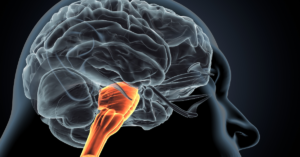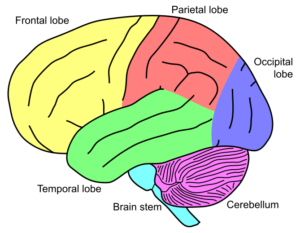
Snapshot: What is the Medulla Oblongata?
The nervous system is made up of two main components: the central nervous system, which consists of the brain and the spinal cord, and the peripheral nervous system, which consists Read More…
NAF has launched a petition on Change.org calling on the FDA to prioritize treatment options for rare diseases with urgent unmet needs, including Spinocerebellar Ataxia (SCA).
SIGN THE PETITION
A collection of resources for individuals and families affected by Immune-Mediated Ataxia.
Immune-mediated Ataxias are a group of neurological disorders caused when someone’s immune system mistakenly attacks healthy cells in the cerebellum (the coordination center of the brain) and related brain regions. Many underlying triggers can cause this mistaken immune response, such as an infection, gluten reactivity, surgery, or hidden cancer. For complete information about symptoms, diagnosis, and treatment of Ataxia, visit our What is Ataxia? page. This page contains NAF’s resources that are specific to Immune-Mediated Ataxia.
Sign up for our mailing list to stay up-to-date on Ataxia news.
Presented by Natalie Witek, MD
This webinar gave an overview of the causes and symptoms of Immune-Mediated Ataxia, the typical diagnostic journey for those affected, and what to expect for clinical care.
Presented by Jérôme Honnorat, PhD
This webinar taught us how Immune-Mediated Ataxia is studied and gave an overview of the current state of research and drug development for the disease.
Immune-Mediated Ataxias are a group of neurological disorders caused when someone’s immune system mistakenly attacks healthy cells in the cerebellum (the coordination center of the brain) and related brain regions. Many underlying triggers can cause this mistaken immune response, such as an infection, gluten reactivity, surgery, or hidden cancer.
Much like other kinds of Ataxia, the first symptoms of immune-mediated Ataxias are often decreased coordination, abnormal walking, and trouble balancing. People with immune-mediated Ataxia may begin walking with a wider stance to try to feel more stable. Having swallowing or slurred speech is also common. Unlike in genetic Ataxias, where it can take years for symptoms to develop, immune-mediated Ataxia symptoms progress quite quickly – on a scale of days, weeks, or months.
Depending on the underlying immune response causing the Ataxia, patients may have other symptoms such as seizures, spasms, diarrhea, or sudden weight loss.
The symptoms of Immune-Mediated Ataxias can occur at any age. There are more treatment options for Immune-Mediated Ataxias than for other Ataxia types.
If the underlying immune response causing the Ataxia is treated and stopped, the Ataxia symptoms may also stop. With medication and physical therapy, some patients can regain their sense of balance. If there has been a large amount of damage to the neurons in the cerebellum, some patients continue to have balance and coordination difficulties after treatment. However, once the immune response is stopped, symptoms do not progress or get worse.
The type of treatment varies depending on the kinds of Immune-Mediated Ataxia someone has, all with the goal of stopping the immune response.
For example, someone with gluten Ataxia is treated through a strict gluten-free diet. Someone whose Ataxia is caused by a cancerous tumor will have the tumor removed through surgery, shrunk with radiation, or treated with chemotherapy. Plasmapheresis can be done with machines to remove Ataxia-causing antibodies from people’s blood. There are also treatments that tone down immune responses the body is making by reducing the number of immune cells. Some less-understood Immune-Mediated Ataxia types, such as anti-GAD Ataxia, do not have specific treatment options.
There are also medication options to help manage Ataxia symptoms. Symptomatic treatments can be used in combination with treatments that stop immune responses. They can also be used on their own if the underlying immune response has not been identified yet.
A neurological examination is used to determine if someone has Ataxia symptoms. Then an Immune-Mediated Ataxia diagnosis is usually made through exclusion. This means that other known causes of Ataxia, like genetic Ataxias, are ruled out until the only remaining causes are related to the immune system.
Doctors will often conduct antibody panel tests, which look for specific types of antibodies that are known to cause Ataxia in your blood or cerebrospinal fluid. Other tests can include brain imaging or body scans to figure out where immune responses are happening in the body.
People with Immune-Mediated Ataxia do not typically have a family history of Ataxia. However, they may have a family history of other autoimmune diseases (such as type one diabetes, pernicious anemia, thyroid autoimmunity, or vitiligo). This can be an important clue to the diagnosis.
SCAsource provides Ataxia research news, directly from researchers to the Ataxia community. Visit SCAsource to see their full collection. Here is a collection of articles relevant to Immune-Mediated Ataxia.

The nervous system is made up of two main components: the central nervous system, which consists of the brain and the spinal cord, and the peripheral nervous system, which consists Read More…

Brainstem – the part that connects and acts as a communicator between our brain and our spinal cord. The brainstem itself is composed of midbrain, pons, and medulla oblangata. Even Read More…

Written by Ziyang Zhao Edited by Dr. Hayley McLoughlin A newly developed smartphone application will allow patients to assess ataxia at home. There’s an interesting problem in science that’s often Read More…

Written by Dr. David Bushart Edited by Dr. Sriram Jayabal How can employment be made more accessible for ataxia patients? What barriers exist? A study of workers and non-workers with Read More…

Coordination of smooth and effective movements is essential in daily tasks, such as speaking or walking. The ability to successfully orchestrate these movements is commonly referred to as “motor coordination”. Read More…

The cerebellum, often referred to as the “little brain”, is part of the brain that is located behind the cerebrum (forebrain). The cerebellum accounts for about 10% of the brain’s Read More…
Our generous donors help us fund promising Ataxia research and offer support services to people with Ataxia. Your gift today will help us continue to deliver on our mission to improve the lives of persons affected by Ataxia.
Join for FREE today! Become a part of the community that is working together to find a cure. As a member you will receive access to the latest Ataxia news with our e-newsletter and Generations publication.
